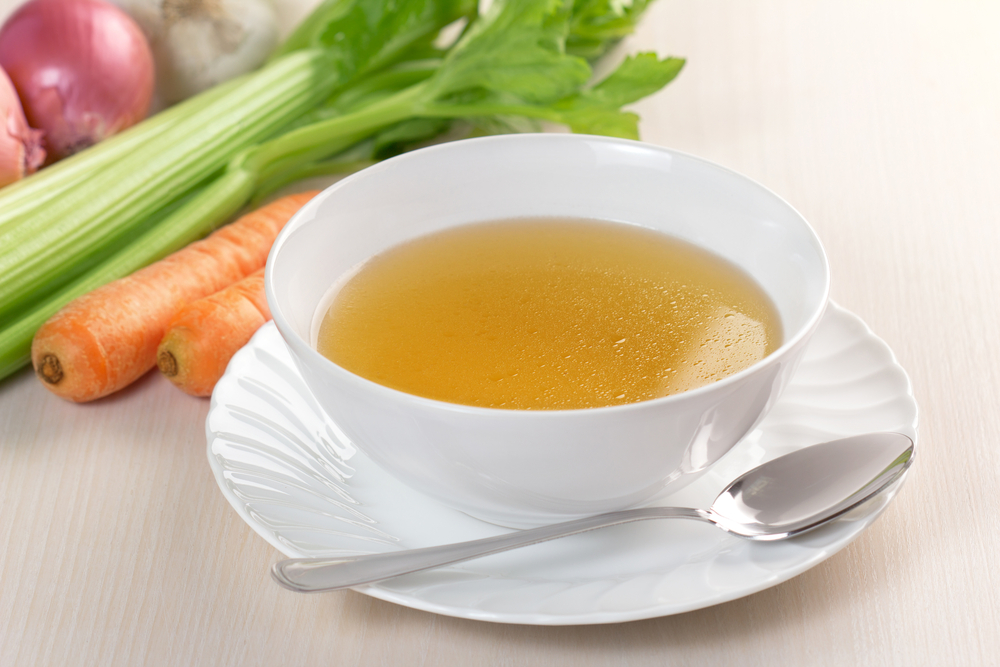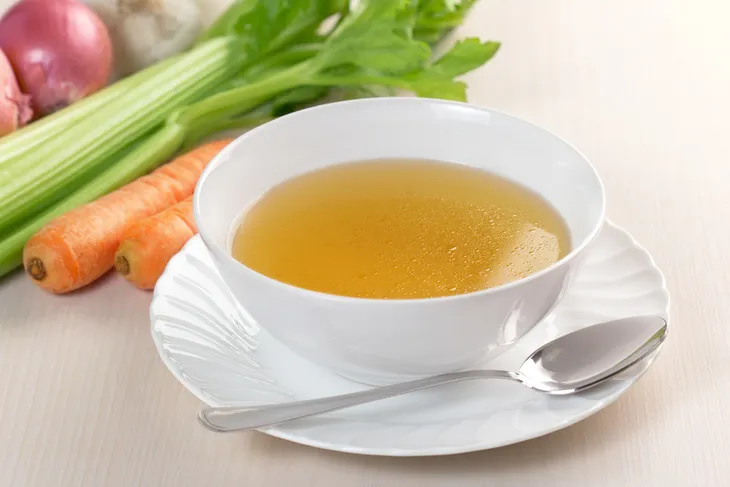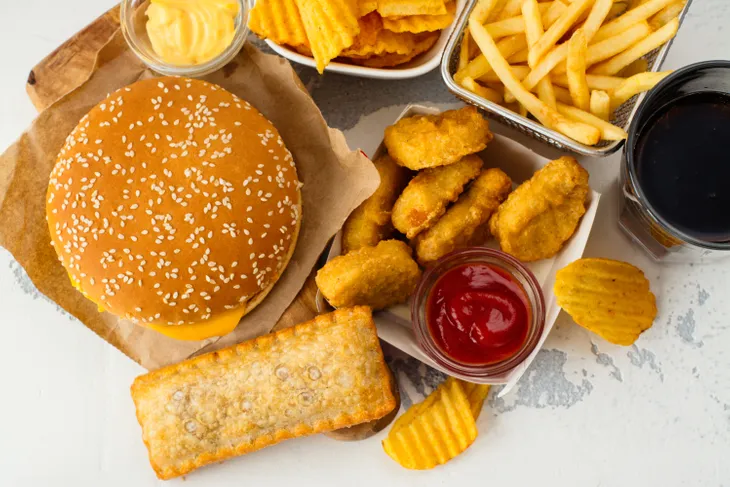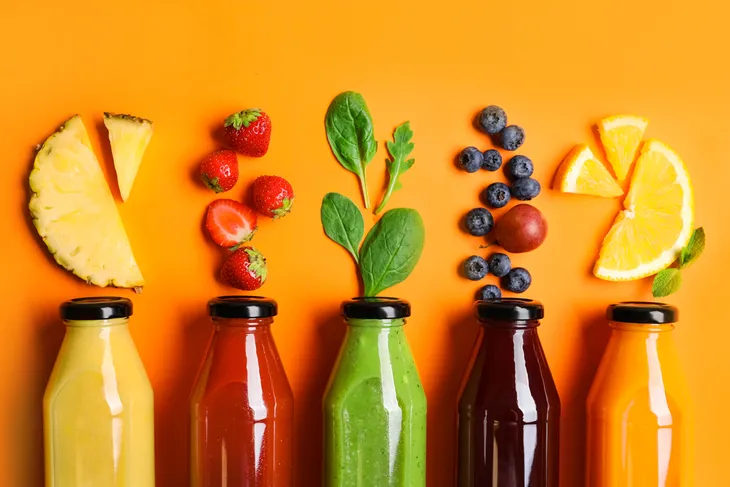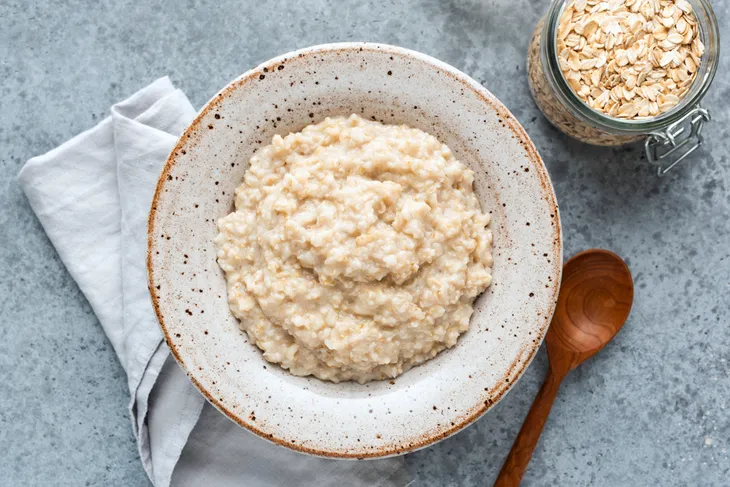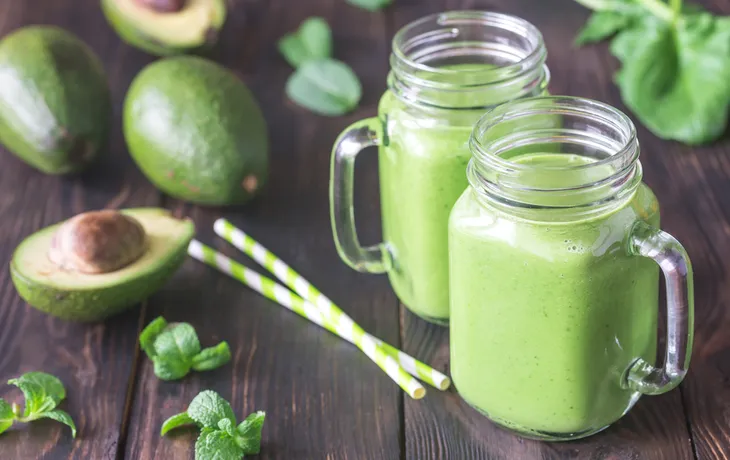- Clear liquid diets are often required before medical procedures or when digestive system problems are present.
- Liquids allowed in a clear diet include juices, water, gelatin, and ice pops.
- Risks include inadequate nutrient intake, inaccurate medical test results, and blood sugar issues.
- Benefits include adequate hydration, prevention of nausea, and clearer intestines for surgical procedures.
A clear liquid diet is a special diet that typically consists of liquids, gelatin, and certain strained foods. Clear diets are sometimes prescribed for patients who are scheduled for surgical procedures and for individuals with digestive problems. The term “clear” in this liquid diet generally refers to any type of liquid that is clear enough to see through, so certain colored liquids and meltable foods may also be permitted in this plan.
Clear liquid diets differ from liquid diets in that full liquid diets allow non-clear beverages such as milk. A clear liquid diet should ensure that the liquids provide adequate hydration and electrolytes during periods of limited calorie intake. If you’ve been prescribed a clear liquid diet, it’s important to understand how the diet works and learn about its risk factors and benefits.
What Is the Clear Liquid Diet?
Clear liquid diets are medical and non-medical diet plans consisting of clear liquids and meltable foods. These diets are most often prescribed before and after surgical procedures or as a temporary means to soothe digestive ailments such as diverticulitis or stomach ulcers that cause nausea or other intestinal symptoms. Individuals may also follow non-medical clear liquid diets for short periods as a way to lose weight or cleanse their intestines.
Further, dentists and oral surgeons may recommend a clear liquid diet during the aftercare period following wisdom teeth extractions or other moderately invasive procedures to ensure patients are hydrated and nourished as their mouths heal.
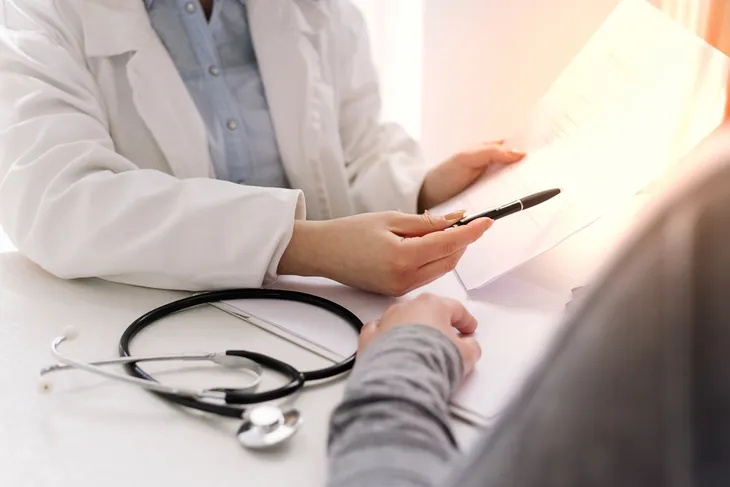 novak.elcic / Shutterstock
novak.elcic / ShutterstockHow It Works
The clear liquid diet provides nutrition to the body via fluids that require minimal digestion, allowing the stomach and intestines to rest. Consuming clear liquids for a short period and omitting solid foods helps to minimize residue in the bowels, which makes it easier to perform endoscopic tests and other procedures.
The intake of fluids throughout the duration of a clear liquid diet helps ensure the body stays hydrated and still receives vitamins, minerals, and enough calories for energy, though is generally recommended that a person eats and drinks more frequently while on this type of diet.
Permitted Liquids and Foods
Clear liquid diet plans don’t offer much in terms of variety. It includes beverages such as:
- Water (plain or sparkling)
- Iced tea
- Lemonade
- Apple juice, grape juice, and cranberry juice, though juices containing pulp must be strained
- Soda
- Clear sports drinks (like Gatorade or Powerade)
- Herbal teas including lemon, green, and mint
- Coffee without dairy
- Clear nutritional drinks (such as Ensure Clear or Pedialyte)
Permitted foods on the diet include:
- Broths including chicken, vegetable, and beef
- Popsicles
- Regular and sugar-free gelatin (Jell-O)
- Hard candies
- Honey and sugar
- Italian fruit ice
If you are going to be doing a clear liquid diet, your doctor or dietician should provide a specific list of what you are permitted to consume.
What Not To Eat Or Drink
Specific food and beverages permitted or not may vary slightly depending on a person’s medical or dietary needs, and why they are required to follow this particular diet. However, it’s best to avoid solid food, dairy products, and soft foods such as applesauce when following a clear liquid diet.
While certain colored or flavored beverages may be allowed on this diet, gelatin or liquids colored with red or purple dye should be avoided. This is particularly important for individuals scheduled for colonoscopies, as the coloring may cover the inside of the colon, leading to inaccurate test results. Alcohol must be completely avoided, without exception.
Duration
Unless otherwise directed by a physician, clear liquid diets should be followed for a maximum of five days, though it’s more commonly prescribed for only one to three days. While a clear liquid diet can provide a limited number of calories and nutrients, it is not sustainable and would result in malnutrition after a certain amount of time, as the body requires adequate amounts of protein, vitamins, minerals, and nutrients to thrive. If the duration must be extended, a physician may supplement a patient’s clear liquid diet with high-protein gelatin.
If your doctor prescribes a clear liquid diet, follow it precisely, but only for however long they recommend. Plan a healthy, balanced, and filling meal to consume before you start the diet.
Preparing for a Clear Liquid Diet
If you’re following a clear liquid diet plan at home for either non-medical reasons or in the days leading up to a medical procedure, planning ahead can help ensure you’re prepared on the day you start. If you’ve been provided with a list of acceptable foods, shop for and prepare these items ahead of time, such as cooking a homemade broth or making the Jell-O.
If you commonly experience symptoms such as faintness or headaches due to hunger, advise your physician prior to starting the diet so they can make adjustments or prescribe medication if necessary.
Medically Supervised Clear Liquid Diets
Medically supervised liquid diets are often required for patients scheduled for surgical procedures or medical tests that involve the digestive tract. In some cases, individuals who are hospitalized for illnesses must also follow clear liquid diets during their recovery process. For example, a patient hospitalized due to a respiratory illness and put on a ventilator or a feeding tube may not be able to swallow and digest solid foods after coming off them.
Individuals with digestive illnesses or conditions that cause nausea, vomiting, and other uncomfortable GI symptoms may be prescribed a clear liquid diet until symptoms subside. Medical professionals oversee this kind of medically supervised diet to ensure that patients receive appropriate nutrition and hydration throughout the process.
Non-Medical Clear Liquid Diets
Non-medical clear liquid diets are similar to medical diets in terms of liquid and food content and overall duration. However, these diets are not medically prescribed or supervised. Some individuals start clear liquid diets to lose weight, as clear liquids tend to be much lower in calories than solid foods, and calorie deficits help dieters shed unwanted pounds. It should be noted that this is not a healthy, safe, or sustainable way to lose weight. If you are planning on starting a weight loss plan, consult your doctor, nutritionist, or registered dietician.
Intestinal cleansing is another common use of a clear liquid diet. Sometimes referred to as a detox, consumption of clear liquids for a set amount of time may help to ease constipation and clear the intestines of excess buildup.
Introducing Solid Food Again
Individuals who complete medically supervised clear liquid diet plans generally receive specific instructions on introducing solid foods back into their systems. Gradual reintroduction of solid foods can help to prevent unwelcome side effects such as nausea or bloating, so it’s important to avoid eating too fast or consuming too much solid food at once, even if you are hungry.
Cooked vegetables are easier to digest following a liquid diet, and bland foods, such as well-cooked oatmeal and brown rice, are generally well-tolerated when introduced slowly and in small amounts. Other options may include pudding and ice cream. Specific food items can vary depending on the doctor’s orders.
Managing Hunger and Cravings
A lowered calorie intake and substituting liquid food for solid can lead to increased hunger and cravings for sweets and salty foods. One way to manage sweet cravings is to consume fruit juices (without pulp) or to incorporate different flavors of gelatin. Salt cravings can often be handled by drinking beverages containing electrolytes. You can also include chicken or vegetable broth in your diet plan for an added touch of salt.
To help prevent hunger cravings, many dieticians recommend including clear protein drinks in liquid diet plans. Chicken broth, bouillon, and vegetable broth are also excellent options to help keep hunger and cravings at bay.
Clear Liquid Diets Are Not the Same as Liquid Diets
Liquid diets are often prescribed to candidates two weeks before bariatric surgery — a surgery that surgically shrinks the size of a person’s stomach — to help prepare their bodies for surgery and encourage pre-surgery weight loss.
In addition to weight loss, the liquid diet can help patients boost their protein levels, which aids in wound healing and helps train the body to lose fat as opposed to muscle mass. However, this diet includes much more than clear liquids and does not generally allow for the consumption of sugar.
If you’re ever unsure about what type of diet your doctor wants you to follow, ask for clarification.
Diet Benefits and Risk Factors
Clear liquid diets provide nutrients, electrolytes, and hydration to individuals who cannot consume solid foods. A clear liquid diet can help ensure the intestines are cleared for physicians and surgeons to perform medical tests and medical procedures. The mild formulation of a clear liquid diet can also provide relief from nausea and vomiting in individuals with intestinal or digestive conditions.
One of the biggest risks or challenges of the clear liquid diet is maintaining adequate nutrition levels, even though these diets are generally short-term in duration. Additional risk factors include dehydration (if you don’t consume enough liquid or follow the diet exactly), low protein levels, and low energy, which can lead to increased tiredness and irritability.
Clear liquid diets may also trigger abdominal discomfort and cramping in certain individuals, which should be addressed immediately by a physician. To lower your risk of experiencing complications during a clear liquid diet, follow your physician’s instructions exactly and immediately report any adverse effects.
